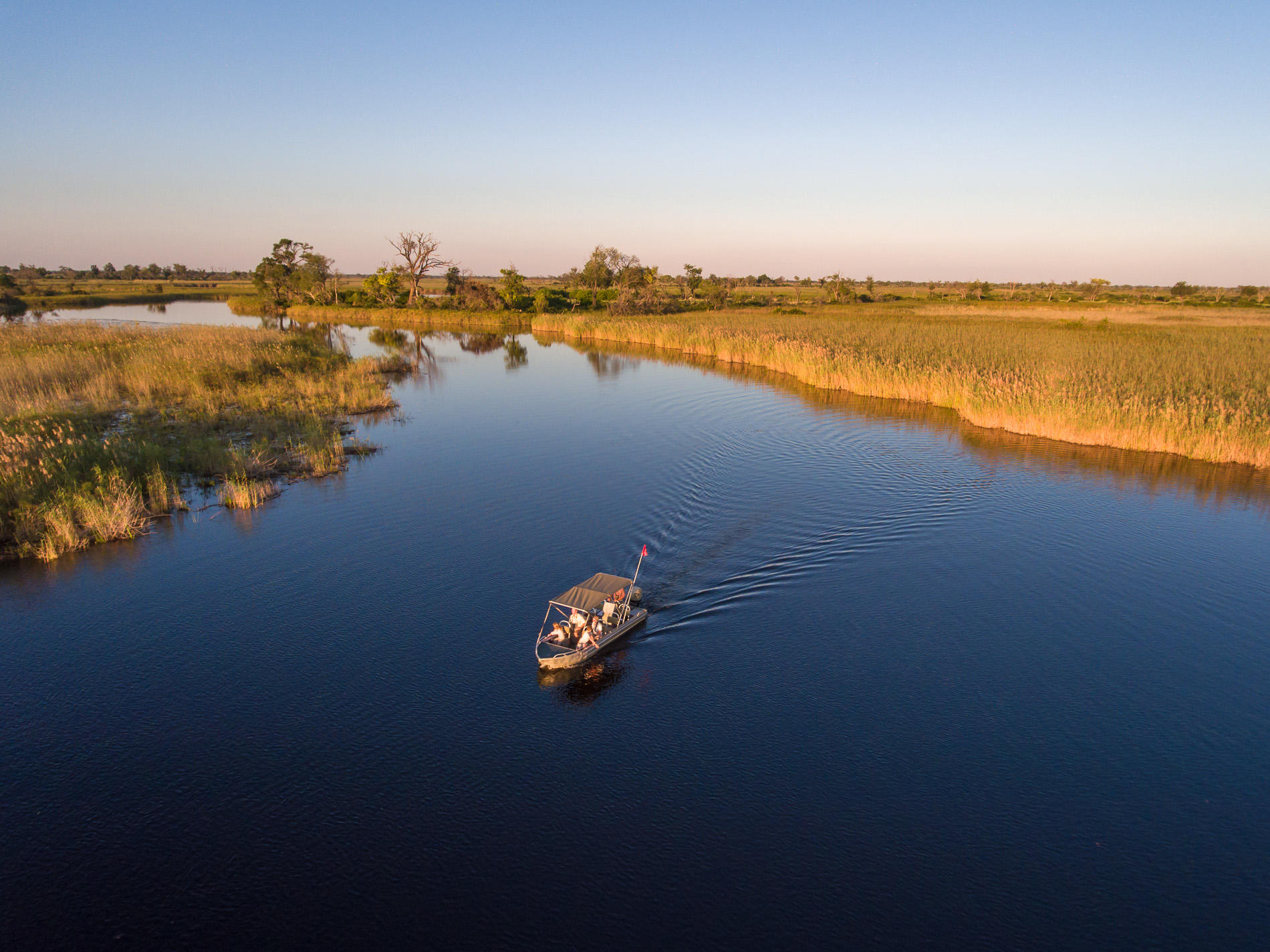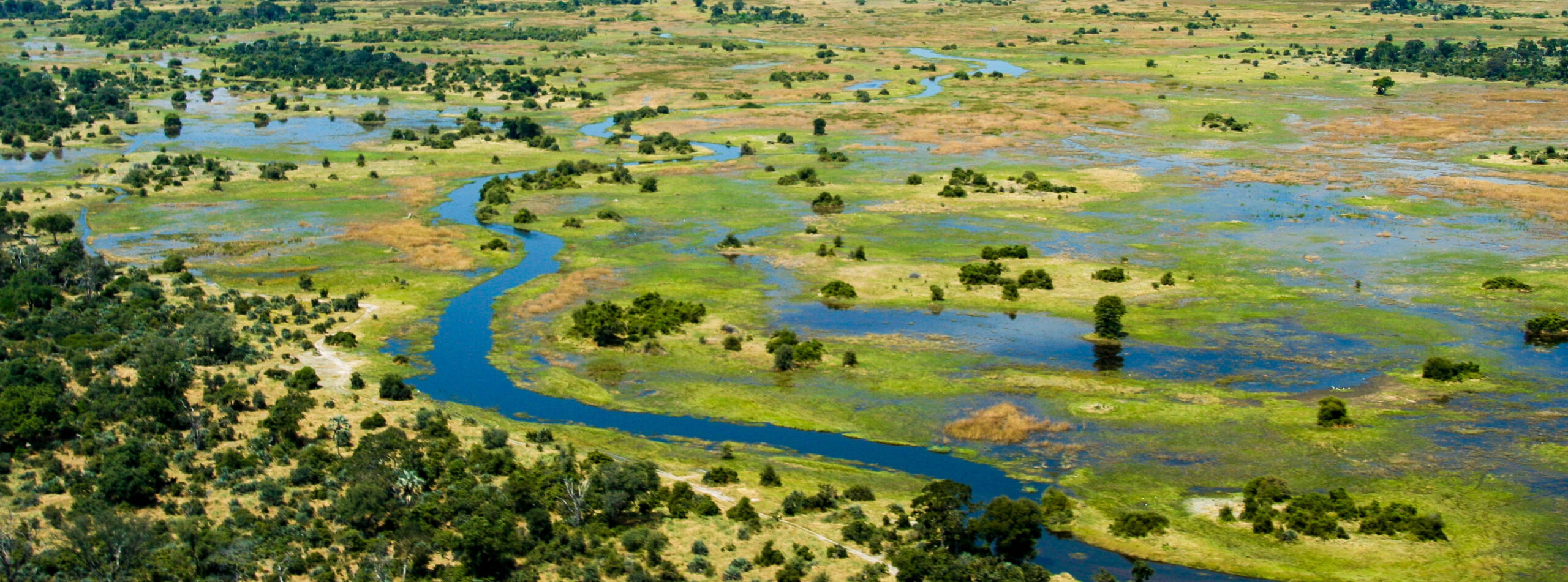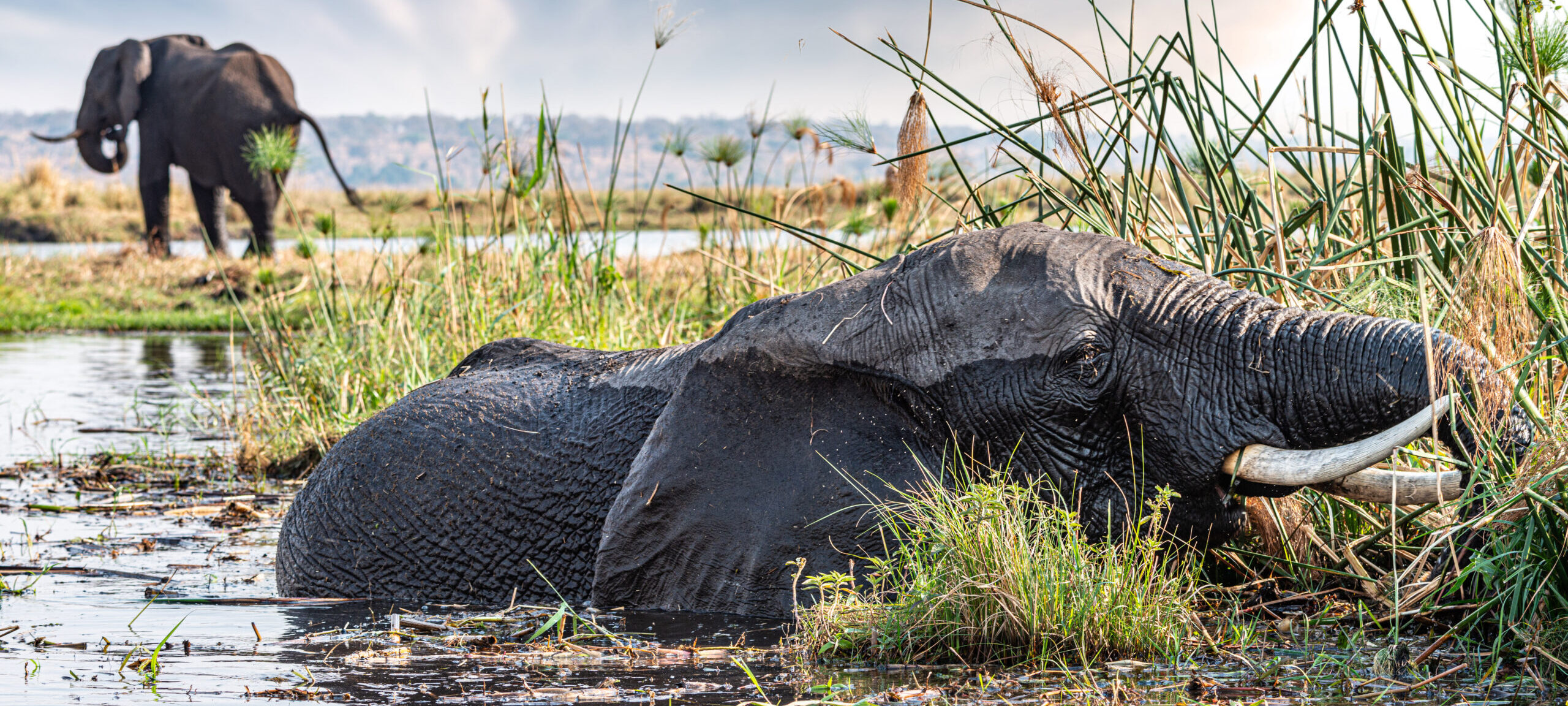Botswana
Botswana is a sensational destination, renowned for its abundant wildlife and diverse landscapes, offering a wealth of activities and experiences. The country’s commitment to low-impact, high-quality tourism ensures that visitors enjoy an exclusive and immersive experience, albeit rather pricey!
The north of the country is the premier wildlife region, where the lush Okavango Delta meets the stark beauty of the Kalahari Salt Pans. This unique convergence creates a rich tapestry of ecosystems.
The Okavango Delta, a UNESCO World Heritage site, is a vast inland delta where crystal-clear waterways wind through palm-fringed islands, creating a haven for wildlife. The expansive Delta area is characterized by different regions and the ideal way to experience it fully is by combining several of these, embracing both land and water locations and activities.
To the south, the Kalahari Salt Pans, including the vast Makgadikgadi Pans, provide a stark and otherworldly landscape. These pans transform during the rainy season, attracting flocks of flamingos and offering unique desert-adapted wildlife experiences, including meerkats and the famous brown hyena.
Pure wilderness magic.
BOTSWANA JOURNEY INSPIRATION
Our travel network specialises in tailormade holidays. Below you’ll find some examples, with price guide, using destinations and camps/lodges which we think work well together and demonstrate the range of choice available to you. There are many combinations possible so this is just to give you some initial ideas.
When you are ready to explore options more fully, please do complete an enquiry form – we can then put you in touch directly with the relevant specialist partner team. In discussion with you, they will tailor an itinerary based around your interests and your budget.

Experience the beauty of Botswana’s Okavango Delta with a 6-night classic fly-in safari. Stay at two distinct Ker and Downey safari camps – one in the Moremi Game Reserve and the other in a private concession.
Kanana Camp is located in the southwestern Okavango Delta, overlooking the Xudum River. Kanana is known for offering an excellent wetland experience, as well as a host of other activities. Okuti Camp in Moremi, is celebrated for its unique design and it continues to offer exceptional value in this area.
This trip would combine well with other safari areas such as Chobe, or an extension in Victoria Falls – everything is tailormade so please ask us for details.
 Days 1-3 Camp Okuti, Moremi Game Reserve
Days 1-3 Camp Okuti, Moremi Game Reserve
Upon arriving at Maun Airport, you will be warmly welcomed and assisted onto a light aircraft bound for the Moremi. Upon landing, you’ll be met and transferred to Camp Okuti overlooking the permanent waters of the delta. The camp features distinctive lagoon-side safari chalets with curved reed roofs, all set on raised teak decks. Guests can enjoy two game viewing activities each day: open vehicle game drives to spot an abundance of large mammals and powerboat excursions towards the upper delta.
The Moremi Game Reserve, located in a corner of the Okavango Delta, spans over 1,000 square kms of grassy floodplains, winding waterways, palm-fringed islands, forests, and lily-covered lagoons. This diverse landscape provides an exceptional setting for game viewing. Hippos and crocodiles can be seen in the clear waters, while the varied vegetation supports a rich array of wildlife. Large herds of impala and tsessebe graze the savannah, and waterbuck are frequently sighted. While much of the game is migratory, the excellent grazing ensures year-round game viewing. Predators such as lion, cheetah, and leopard hunt in the open veld, and the area is notably good for observing wild dogs.
 Days 4-6 Kanana Camp, Kanana Concession, Okavango Delta
Days 4-6 Kanana Camp, Kanana Concession, Okavango Delta
Board a light aircraft for a flight from Okuti southbound to Kanana Camp. Upon arrival at the airstrip, you will be greeted and transferred to this small, tented camp nestled in a private concession deep within the Okavango Delta. This 6,000 square mile maze of lagoons, channels, and islands is an incredible wilderness teeming with wildlife. At Kanana Camp, guests can immerse themselves in the splendour of the Okavango waterways, enjoy a range of activities, and observe the rich wildlife concentrated on the palm-fringed islands. Recently, the concession has experienced an increase in big cat sightings, with numerous lion encounters adding to the excitement of your stay.
 Day 7 End of Arrangements
Day 7 End of Arrangements
Today you will be transferred back to Maun airport for your onward journey.
PRICE GUIDE
Per person sharing: from £5,750 (based on mid season)
- This itinerary is available March – January, although the optimum times are likely to be May – November
- This trip starts and ends in Maun
INCLUDES
- All domestic flights, airstrip transfers and departure taxes
- Park & conservancy fees
- All game activities
- Full board accommodation and house drinks
- Safari laundry
International Flights Our partners can book international flights for you as required.
 Experience the best of the Okavango Delta enjoying a blend of land and water-based safaris from superb Wilderness tented camps, located in private concessions. Wilderness provides a high quality safari experience throughout.
Experience the best of the Okavango Delta enjoying a blend of land and water-based safaris from superb Wilderness tented camps, located in private concessions. Wilderness provides a high quality safari experience throughout.
This trip would combine well with other camps in the region, or perhaps with a stay in Cape Town or Victoria Falls. Everything is tailormade so please do discuss ideas with us.
 Days 1-3 Little Vumbura Camp, The Okavango Delta
Days 1-3 Little Vumbura Camp, The Okavango Delta
Upon arrival at Maun International Airport, collect your luggage and clear customs. You will be greeted and assisted with check-in for your light aircraft transfer to the northern reaches of the Delta and to Little Vumbura Camp. Nestled on an island in a private concession in the northern reaches of the Okavango Delta, Little Vumbura is a charming six-tent camp accessible only by boat. Each tent, shaded by an ancient forest, features en-suite facilities with indoor and outdoor showers and a deck with stunning views of the floodplains. Stilted walkways connect the camp, where baboons are often seen wandering. The sundeck, large plunge pool, and reading area overlook the floodplains, providing excellent spots for wildlife viewing. At Little Vumbura Camp, water-based activities such as mokoro (dugout canoe) trips and motorboat excursions are a highlight. Game drives in open Land Rovers and walking safaris are available on request, offering spectacular and diverse wildlife sightings.
 Days 4-6 Chitabe, The Okavango Delta
Days 4-6 Chitabe, The Okavango Delta
Today you will be transferred to the airstrip for a short flight south to Chitabe Camp. Located on an island in a private concession in the south-east of the Okavango Delta, Chitabe features eight Meru-style tents, each elevated on wooden decks to make the most of the views. The spacious guest tents offer wonderful en-suite facilities, including indoor and outdoor showers, along with a private viewing deck overlooking the floodplains. Wooden walkways connect the tents to the camp’s communal areas. The swimming pool offers a perfect spot to relax and view the plains. Chitabe boasts some of the best game viewing in the Delta, with the concession bordered on three sides by the Moremi Game Reserve. The diverse wildlife in the area includes common sightings of predators and is particularly renowned for its African wild dog population – the camp sits within the Botswana Wild Dog Research Project’s research area.
 Day 7 End of Arrangements
Day 7 End of Arrangements
Today you will be transferred back to Maun airport for your onward journey.
PRICE GUIDE
Per person sharing: from £11,735 (based on mid season)
- This itinerary is available March – January, although the optimum times are likely to be May – November
- This trip starts and ends in Maun.
INCLUDES
- All domestic flights, airstrip transfers and departure taxes
- Park & conservancy fees
- All game activities
- Full board accommodation and house drinks
- Safari laundry
International Flights Our partners can book international flights for you as required.
BOTSWANA GUIDE
You’ll find a short guide to Botswana below.
To start planning a trip to Botswana please contact us via the Enquiry Form, by email on info@realworldconservation.org.uk or on 01692 218189.

The Okavango

Established in 1963, Moremi Game Reserve has been extended multiple times and now encompasses nearly 20% of the Delta, providing a diverse array of habitats that support a rich variety of wildlife.
Chief’s Island, a 70 km long landmark, is the reserve’s most notable feature and a wildlife sanctuary. The landscape of Moremi is diverse, featuring acacia and mopane forests, with the latter covering over a quarter of the reserve.
The varied terrain supports a full range of wildlife, including lions, leopards, and both white and black rhinos (thanks to a successful rhino reintroduction programme). The reserve also boasts the largest population of red lechwe, and serves as a crucial habitat for endangered African wild dogs, accounting for over quarter of the global population. This makes the reserve a critical area for wild dog conservation and research.
Moremi Game Reserve is also a birdwatcher’s paradise, with over 550 species recorded. It is one of the best places to spot the elusive Pel’s Fishing Owl and the towering mopane trees create a unique contrast to the surrounding wetlands and provide a habitat for woodland birds not found elsewhere.
The abundance of birdlife, combined with the diverse mammal populations, makes Moremi an exceptional safari destination.
Access to Moremi can be achieved by road or air. However, road travel requires an experienced driver, as the reserve’s roads often degrade to sandy tracks within its boundaries. Areas accessible by road tend to see higher visitor numbers. To fully enjoy the natural beauty of the area we recommend flying into one of the airstrips, or opting to stay in a private concession bordering the reserve.
OUR PROJECT PARTNERSHIPS IN BOTSWANA
Images: Kanana Sleep Out Deck (top left); Chitabe on safari (top right);


 Chobe National Park is a wildlife paradise with more than 120,000 elephants roaming its lands—the highest concentration anywhere on the planet. Witnessing these majestic creatures in their natural habitat is an unforgettable experience, earning Chobe its nickname, ‘Land of Giants.’
Chobe National Park is a wildlife paradise with more than 120,000 elephants roaming its lands—the highest concentration anywhere on the planet. Witnessing these majestic creatures in their natural habitat is an unforgettable experience, earning Chobe its nickname, ‘Land of Giants.’

